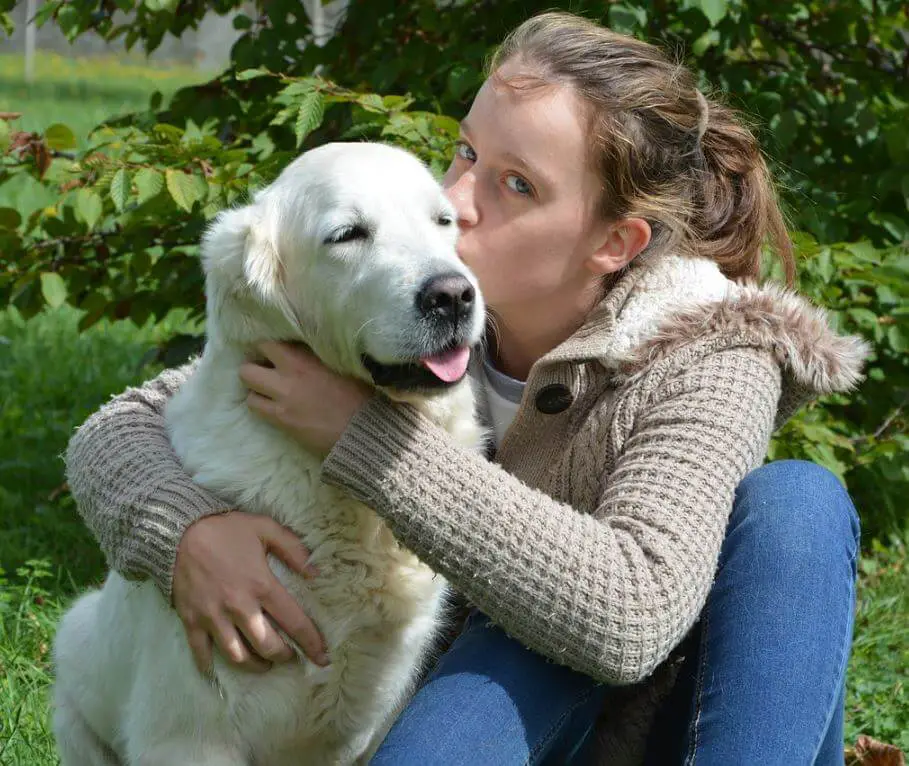Have you ever wondered if your dog enjoys those heartfelt kisses you shower upon them? In this article, we’ll unravel the mystery of whether dogs appreciate being kissed. Discover the signs that indicate a dog’s comfort with kisses, the factors influencing their response, and gain insights into fostering a loving and respectful bond with your furry companion.

Understanding Canine Communication:
1 – Non-Verbal Cues:
Dogs communicate primarily through body language and non-verbal cues. Understanding their signals is key to building a strong bond. Pay attention to your dog’s reactions to various stimuli, including your displays of affection.
2 – Individual Preferences:
Just like humans, dogs have individual preferences when it comes to physical contact. Some dogs revel in cuddles and kisses, while others may prefer alternative forms of affection, such as belly rubs or playtime.
3 – Respectful Interaction:
Respecting a dog’s personal space and understanding their comfort level with physical contact is essential. It’s crucial to approach each dog as an individual with unique preferences rather than assuming all dogs universally enjoy certain forms of affection.
Signs Your Dog Enjoys Kisses:
1 – Relaxed Body Language:
A dog that enjoys kisses will typically exhibit relaxed body language. Look for signs such as a wagging tail, loose ears, and a content expression. These indicate that your dog is comfortable and happy with the affectionate interaction.
2 – Initiating Affection:
Some dogs take the lead in initiating affectionate interactions. If your dog approaches you for kisses by nudging or leaning in, it’s a positive sign that they appreciate the attention.
3 – Calming Signals:
Dogs use calming signals, such as licking their lips or yawning, to convey relaxation and ease. If your dog responds to kisses with these signals, it’s an indication that they are comfortable and content.
Factors Influencing Responses to Kisses:
1 – Individual Temperament:
Each dog has a unique temperament that influences their response to physical contact. Some dogs are naturally more affectionate and enjoy close interaction, while others may be more reserved.
2 – Early Experiences:
A dog’s early experiences and socialization play a role in shaping their comfort level with different forms of affection. Dogs that have positive experiences with kisses from an early age may be more receptive to them.
3 – Respect for Personal Space:
Respecting a dog’s personal space is crucial. If a dog shows signs of discomfort, such as pulling away, avoiding eye contact, or stiffening, it’s essential to give them space and choose alternative ways to express affection.
Fostering a Loving Bond:
1 – Observation and Adaptation:
Observe your dog’s responses to kisses and adapt your interactions based on their comfort level. Pay attention to cues that indicate enjoyment and be responsive to their individual preferences.
2 – Variety in Affection:
Offer a variety of affectionate gestures to determine your dog’s preferences. Some dogs may enjoy kisses, while others may prefer gentle petting, scratches, or playtime.
3 – Positive Reinforcement:
Use positive reinforcement to create positive associations with affectionate interactions. Reward your dog with treats or praise when they respond positively to kisses, reinforcing the bond between you.
While dogs, like humans, have individual preferences for affection, many dogs thoroughly enjoy kisses when approached with respect and understanding. By observing your dog’s body language, respecting their personal space, and adapting your interactions accordingly, you can foster a loving and harmonious bond with your furry friend.
